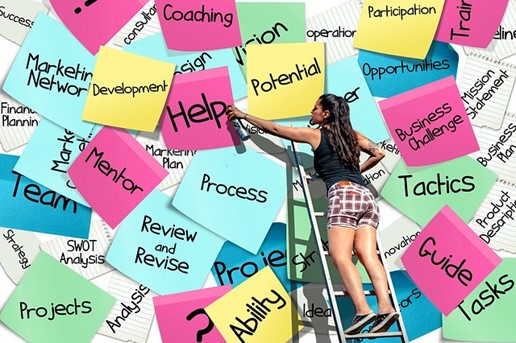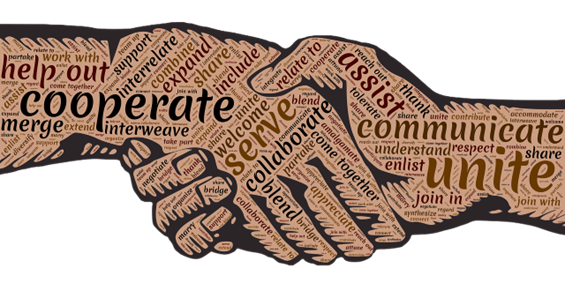Minimising conflict and encouraging collaboration amongst age diverse teams is a common challenge for managers today. According to the Harvard Business Review, we are living in the first time in history when five different generations are present in workforce.
Media stereotypes of generational behaviours can make establishing positive working relationships more difficult. Younger generations are often labelled as ‘lazy’ and ‘entitled’ and older generations as ‘technophobes.’ These generalisations encourage employees to focus on perceived differences which negatively impacts on performance and can lead to conflict.
Employers may be tempted to focus recruitment on younger generations in order to avoid such problems. Although workforce diversity offers well documented potential business gains, employers mostly look at diversity in terms of race and gender rather than age. For example, research by the Harvard Business Review and DeLottie found that, ‘over two-thirds of companies considered older age a competitive disadvantage.’
However, a recent Forbes article emphasises the potential business benefits of multi-generational teams. When managed correctly, the diversity of thought of different age groups results in better ‘decision making, problem solving and innovation’ increased retention and ‘greater engagement.’
Our guide shows you how to nurture age-diverse teams, enabling you to reap the rewards.
Know your employees, not generational stereotypes
First, find out what different demographics you have in your teams and in what proportions. This will inform you of the variety of attitudes and approaches you are likely to encounter. Rather than catering for a variety of needs, organisations all too often focus on the generation in majority. However, this reduces the benefits of multi-generation teams and can cause resentment to build.
Demographic information should act as a starting point for learning about the attitudes and preferences of each generation. However, when HBR revealed the common stereotypes that are attached to each of the five generations in today’s workforce:
- The Silent Generation (born 1925 to 1945; are said to be ‘loyal but traditional’
- Baby boomers (1946 to 1964; are said to be ‘collaborative but averse to change’
- Generation X (1965 to 1980; said to be ‘independent’ but ‘bleak’ or cynical
- Millennials (1981 to 2000 are often said to be ‘driven but entitled’
- Generation Z (2001 to 2020 are said to be ‘progressive but disloyal’
they stressed that being informed by stereotypes such as these actually causes more division.
A better approach to gaining insights on generational perspectives is to be aware of the conditions each generation experienced when becoming working age.
For example, Millenials who entered the workforce during the Great Recession, ‘might value job security and routine, and prefer to work a predictable nine-to-five schedule.’ In contrast, Gen Z, for whom remote working was their first experience, ‘are likely to value more flexibility.’
Having lived through many recessions amongst a backdrop of rocketing house prices, Gen X have often struggled to get financially established. The upside is that they have come to expect change, often making them resourceful and adaptable.
In contrast, Baby Boomers, who have mostly enjoyed steady incomes and financial security, are likely to have most faith in the system. This can make them more traditional in their work ethic, having faith that hard work and commitment will result in reward.
Whilst this information helps us to understand and empathise with generations more effectively, gathering feedback directly from employees will be more accurate and help each age group to feel valued. By using employee feedback to better cater for the needs of all, this leads to higher levels of engagement.
Promote openness to inter-generational differences
Leadership should raise the profile of inter-generational acceptance. When discussing and creating standards with your team as part of diversity and inclusion, include conversations on age. This could include talking about stereotypes, individual team members’ experiences and how they feel stereotyping affects them.
Encouraging team members to get to know each other as individuals helps to fight our unconscious biases.
Promote quality communications over a specific medium
Accommodating the needs of each age group doesn’t just apply to preferences over flexible and remote working. Age diverse teams are also likely to have different ways of approaching communications. This can often be a cause of conflict and frustration but managers can easily resolve these issues by encouraging employees to share their preferences. This helps employees learn to respect individual ways of working and promotes healthy compromise and collaboration.

Focus should not be on the medium used but whether communication is effective. This encourages employees to be more flexible and accommodating of each other’s preferred ways of handling internal communications.
Accommodate personal needs and aspirations
Workers of different generations are at different stages of their lives and want different things from their careers. A one-size-fits all approach to career progression often fails to engage employees as different generations have different aspirations and goals.
Research by Sage suggests that Gen Z seek opportunities for work travel, Millenials value advancement through training, while older Gen X seek material rewards to help them cope with family and financial commitments.
Gathering information on each individual’s career goals means managers are better equipped to motivate them.

Find common ground
What is considered correct or taboo at work has changed dramatically in recent decades. In addition to our age, our views of what is acceptable are also influenced by our age, race, background, gender, sexual orientation, and religion. This can make it challenging to attain an atmosphere where everyone feels heard yet individual beliefs are respected.
Returning to the common ground employees share can be a good starting point. By accepting a role within the company, each team member is expected to follow its guidelines and values during their working day.
Internal company policies defining what behaviour employers expect from employees and vice versa can provide neutral ground rules. There are very few companies today who don’t also have a set of core values. Ideally, these are created for the purpose of bringing the diverse workforce together as the company grows, acting as a guide to how employees relate and the community functions as a whole.
Even if company values don’t seem to reflect what’s currently happening in the company, discussing how you can make company ideals like ‘respect’ and ‘integrity’ a reality can help get everyone onto the same page and create a more unified team.

Promote the positives
Educate your team on both the positive effects of multigenerational workforces and common challenges that can arise. Be clear that you actively seeking better ways of working together and rally your team around this vision.
Remind your team that diversity of thought boosts innovation, improves decision making and will provide the team with insights to help them be more successful. Emphasise the importance of every voice and that each age group offers different skills for others to learn.
Devise collaborative learning projects to put this theory to practise, such as pairing younger and older team members for skill swapping training or mentoring.
Although younger generations are assumed to have greater tech mastery, generation skill-swaps can show that older members are open to learning and have valuable experiences to share. Forbes commented on this in a recent article, ‘Seasoned employees have a lot to teach junior employees. Business is much more than trends and technology. It’s applied intuition that takes years of experience to develop.’
When employees have opportunities to learn and share their particular expertise, engagement, productivity, and camaraderie increases.

Final Thoughts
Leadership’s most important role in harnessing the potential of age-diverse teams is showing the company values inter-generational team work, acceptance, and collaboration. It’s important that employees are clear that the ‘us versus them’ dynamic needs to change and that team players will be rewarded.
Encouraging employees to relate to each other as individuals and promoting learning through inter-generational projects helps employees learn to value each other’s differences.
Finally, listening to individual needs and adapting processes and policies to cater for them reassures all age groups that they are heard and valued. The aim should be to create a sense of belonging and engagement, regardless of employees’ age or experience.
